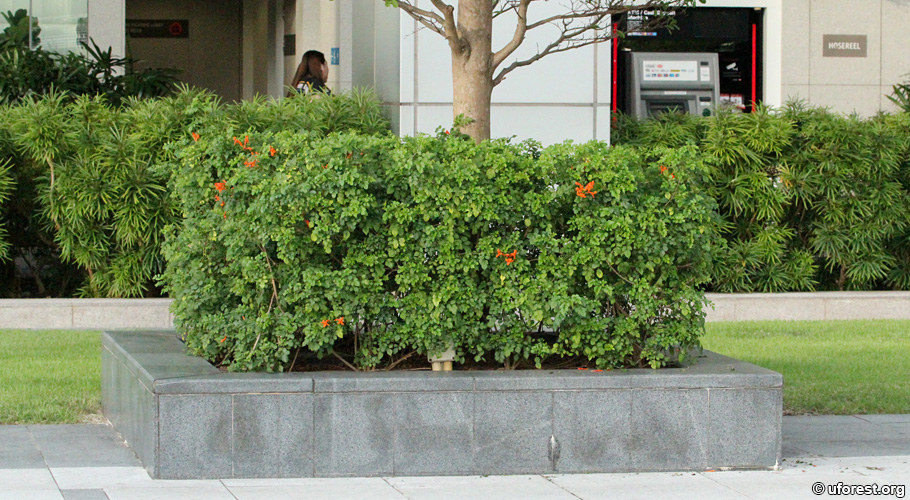Tecoma capensis (Thunb.) Lindl.
| Etymology | Genus | From the common name of the plant, Tecomaxochitl |
|---|---|---|
| Species | From the Cape of Good Hope (Africa) | |
| Family | Bignoniaceae | |
| Synonyms | Bignonia capensis Thunb. | |
| Common Names | Cape Honeysuckle | |
| Status | Exotic: Cultivated Only | |
| Form | Shrub | |
| Native Distribution | Africa (Mozambique, South Africa, Swaziland) | |
Diagnostics:
An shrub cultivated for its attractive flowers, Tecoma capensis has pinnately compound leaves, with each leaflet having serrated margins. It can be easily identified from the bright orange inflorescences.
There are also cultivars of this species, with the flower colours ranging from salmon to yellow.
Interesting Facts:
Traditionally, the powdered bark used to relieve pain and insomnia (NParks, n.d.). Anti-fungal activities were also found in the leaf extracts of this species (Karthikeyan et al., 2016).

A shrub of the Cape Honeysuckle as a base decoration of a tree.

Pinnately compound leaf.

Bright orange flowers.
References
FloraFaunaWeb (n.d.) Tecoma capensis (Thunb.) Lindl. National Parks Board, Singapore. https://florafaunaweb.nparks.gov.sg. Accessed on 18-Nov-2018.
Karthikeyan R, Sai Koushik O, & Kumar PV. (2016) Isolation, Characterisation and Antifungal Activity of β-Lapachone from Tecomaria capensis (Thunb.) Spach Leaves. Medicinal & Aromatic Plants, 5(3): 239.
Author: Siyang
Posted: 2018-11-17 / Modified: 2018-11-18